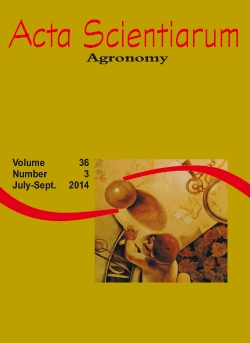<b>Mineralogy and phosphorus adsorption in soils of south and central-west Brazil under conventional and no-tillage systems
Abstract
The low phosphorus availability in tropical and subtropical soils, normally related to adsorption of phosphate to the minerals surfaces, can be attenuated when organic matter (OM) accumulates in the soils. Herein, we report the results of long-term experiments (18–32 years) aimed at quantifying the maximum phosphorus adsorption capacity (MPAC) and its determinant mineralogical variables in Brazilian soils and at assessing the effect of no-tillage (NT) in mitigating the phosphorus adsorption of soils. The MPAC of soils ranged from 297 to 4,561 mg kg-1 in the 0.00–0.10 m layer and from 285 to 4,961 mg kg-1 in the 0.10–0.20 m layer. The MPAC was correlated with the concentrations of iron oxides, goethite and ferrihydrite, gibbsite/(gibbsite+kaolinite) ratio and the specific surface area. The OM increased in the 0.00–0.10 m layer of NT soils, which was not reflected on the decrease of MPAC for the no-tillage soils.
Downloads
DECLARATION OF ORIGINALITY AND COPYRIGHTS
I Declare that current article is original and has not been submitted for publication, in part or in whole, to any other national or international journal.
The copyrights belong exclusively to the authors. Published content is licensed under Creative Commons Attribution 4.0 (CC BY 4.0) guidelines, which allows sharing (copy and distribution of the material in any medium or format) and adaptation (remix, transform, and build upon the material) for any purpose, even commercially, under the terms of attribution.




















































